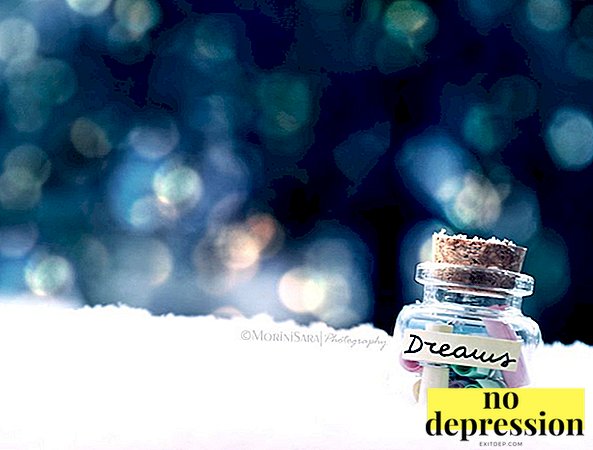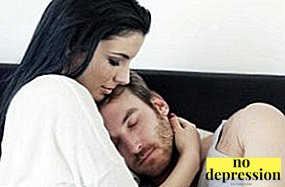Exist dozens of different typologiesdeveloped by famous psychologists.
Some of them were widely known, including socionics, psychosophy, even became the object of increased attention of people far from psychology.
One of the most famous typologies is the one that was proposed Ernest Krechmer, a German psychologist. It is based on the idea that there are a number of personality types, closely related to the way a person looks and what physical health they have.
Body type - what is it?

Everyone has a unique appearancedepending on many factors, including state of health, race, nationality, degree of mobility, dietary patterns in children and adults.
The constitution is also individual for each person, but on the whole, similar characteristics can be noted and a typology can be created on their basis.
The creators of the majority of theories about the constitution, the build of a person are three main types:
- Asthenic (or hyposthenic). They are also called ectomorphs, according to another typology. What does it mean? They are thin, even fragile people with long legs and arms. They tend to be tall (but women may be low), rather narrow shoulders, and a long neck. Most hyposthenics retain fragility throughout their lives, because they are harder than other types to become thicker or more muscular. Have a predisposition to osteoporosis in the elderly and senile due to thinness and high growth, especially women. Hyposthenes usually include men whose wrist is less than 17-18 cm in girth, and women whose figures are less than 14-15 cm.
- Normostenic. Another common name is mesomorph. Their bodies are strong and harmonious, they are distinguished by a sufficient amount of muscle mass and low level of adipose tissue. Normal athletes are obtained from normostenik because they easily manage to increase muscle volume, and they are practically not inclined to be overweight due to good metabolism (but they can recover if they actively overeat or eat excessively high-calorie foods). Usually have an average height, broad shoulders, able to cope with increased loads. In mesomorph men, the girth of the wrist is about 18–20 cm, in women, 15–17 cm. Women of this type may look like a man.
- Hypersthenic, or endomorph according to another theory. These are large people, as a rule, having an excess amount of adipose tissue and a small amount of muscle. They easily get fat, and they are extremely difficult to lose weight due to slow metabolism. Gaining muscle mass is also difficult. Endomorphs are difficult to play sports, therefore, trying to lose weight, they prefer to choose the path of dietary restrictions.
A typical endomorph is a full man with a large belly, a rounded face, short limbs with an extremely small amount of muscle.
Hypersthenics include men whose wrists are in a girth of more than 20 cm, and women whose indicators exceed 17 centimeters. They are characterized by small stature, especially for women.


At the same time, it is difficult to find classical hyposthenics, normostenic and hypersthenics: any person can combine the characteristics of each type.
The above varieties of the constitution help in the selection of the optimal training and nutrition regimen, which will help you quickly recover or lose weight, gain muscle mass.
Typology of E. Krechmera
Ernest Kretschmer divided all kinds of physique on three main types and characterized each of them. In his opinion, the constitution, and in particular the shape of the head, largely determines how a person will behave and what mental illness will be predisposed.
Despite the fact that Krechmer’s theory was repeatedly criticized, it continues to be popular both among those who are seriously interested in psychology and among the majority of the population.

You should look constructively at any typology, including the one that was created by Kretschmer, because none of them can 100% characterize any personand people whose character largely corresponds to some type are not very common.
Three main body types proposed by Krechmer:
- Asthenic. Differs in isolation, is restrained in emotions, is not interested in communication, or communicates with a small number of people, is shy. His emotional reactions are often polar: in admiration or in a state of shock, he loves or despises. Humor, understandable to most people, can repel it, cause bewilderment, not laughter.
Asthenics are serious, intelligent, tend to analyze their own thoughts and actions excessively, they love to dream and dream.
Slightly more than the majority of people are predisposed to the development of schizophrenia.
- Athletic (about the same as normostenik). Athletics experience marked discomfort in the process of adapting to something: changes in life, especially serious ones, disorient them. Their thinking is rather inert, rectilinear, mimicry and gestures appear sparingly. At the same time, they look calm and confident if the circumstances suit them. Prone to the development of schizophrenia, but less than asteniki. Petty.
- Picnic (hypersthenic). Picnics are good-natured, they like to joke, they easily find a common language with people. They are characterized by frequent changes of mood, they look at the world realistically and adapt easily in it, so they can adjust to almost any life situation. Often they feel joy, especially when they are engaged in their favorite business, and create the impression of extremely energetic people who always have the strength for what is important to them. They have a tendency to develop bipolar affective disorder.

Krechmer also singled out dysplastic type (asymmetric, disproportionate in one degree or another body), but gave him a not so detailed description. Some dysplastic, in his opinion, are prone to the development of schizophrenia.
There is and mixed A type that combines two or more basic types.
Detailed description
Asthenic (hyposthenic)

The main character traits: seriousness, the desire to be alone and communicate with others only when necessary, shyness, daydreaming, immersion in their own world, low emotionality, polarity in emotional states.
Asthenics are both stubborn, energetic and strong-willed, and quite weak-willed, unstable.
Strengths: striving for justice, orientation to ideals, in striving to achieve which astenik is capable of much, perseverance, a high level of activity, especially in important things for him, developed intellect, a desire to stand out from the crowd and self-improve.
Weak sides: selfishness, the tendency to live in the clouds, low development of communication skills and lack of desire to communicate, lack of will (not all astenik), emotional dryness, poorly developed sense of humor, self-will, stubbornness, demanding.
Features of men and women: heightened emotional coldness is one of the traits characteristic of male asthenics, largely due not only to the type of constitution, but also to the peculiarities of gender education. It is more difficult for them than for women to express emotions, they are restrained, stubborn.
Astenics women are easier to understand others, they usually experience less stress in the process of communication, but are also cold and tend to prioritize work and favorite activities, rather than family.
Suitable professions: creative sphere - writers, artists, musicians, poets, dancers. Also, asthenics are well suited to the scientific field, which is closely related to research (physics, chemistry, biology, and so on). Professions that involve active communication, they are not enough.
Psychasthenic

The main character traits: sensitivity, concentration, patience, the desire to constantly analyze their own actions and plans, self-absorption, shyness, incessant doubts about their own usefulness and competence, anxiety, tendency to develop phobias, difficulty in making decisions, indecision, low self-esteem, perfectionism.
Strengths: ability to analyze, reason, high intelligence and craving for knowledge, restraint, self-criticism (often excessive, unfortunately), craving for making plans for the near and far future, including work plans, accuracy, love of cleanliness, developed imagination, reliability, but with provided that psychasthenic is in fairly comfortable conditions.
Weak sides: indecision, lack of self-confidence, anxiety, excessive vulnerability, difficulty in trying to make a decision (the more serious it is, the more psychasthenic spends time thinking about). Psychasthenics have difficulty adapting to new circumstances.
Features of men and women: Psychasthenic girls carefully take care of their own appearance, but usually choose discreet clothes and do subtle makeup.
With the opposite sex, both women and men are extremely difficult to start relationships with: they are embarrassed and worry too much.
Suitable professions: it is advisable to choose a job in which there will not be too much stress, constantly changing conditions. It is also difficult for them to work with a large number of people, to speak in front of a crowd.
They are suitable art field, scientific (but not teaching) professions that require attention to detail (programmer, proofreader and editor of artistic works).
Normostenic

The main character traits: composure, conservatism, inflexibility, difficulties in the process of adaptation to new conditions, the desire to pay too much attention to what is not significant.
Positive sides: the ability to remain calm, poise in difficult situations, a rather low emotional level, friendliness, ability to concentrate, self-confidence.
Negative sides: conservatism, inflexibility, stubbornness, inability to quickly adapt to changing conditions, pettiness, inertness of thinking.
Features of men and women: Athletics girls are often in the spotlight because of their visual appeal, they like to play sports and love to eat.
Men also aspire to go in for sports, differ in activity, love female attention.
Suitable professions: suitable areas in which there is no need to constantly adapt to changing conditions. The rest of the list of possible professions is quite wide: for example, managers, accountants, athletes, coaches, dancers.
Hypersthenic

The main character traits: friendliness, good sense of humor, craving for communication, optimism, the ability to easily converge with people, a slight imbalance of mood, practicality.
Strengths: developed communication skills, the ability to attract others, charm, positivity, dedication, the ability to quickly adapt to changing conditions, flexibility, activity, high performance.
Weak sides: poorly expressed indecision, superficiality, variability, insufficiently rational evaluation of one’s own abilities.
Features of men and women: Hypersthenic girls are often in the center of attention of men due to their charm.
They easily attract people to themselves, they are more tactful than men, they are not inclined to joke roughly. Both women and men of this type are well suited to the role of leaders.
Recommended professions: trade, areas closely related to communication, services. Examples: journalist, consultant, manager, presenter.
When choosing a profession, it is important for all people first of all to be guided not so much by their type as by their own feelings, desires, abilities. Too many conditions affect the formation of the human personality, and no typology can take this into account.
What are we like? Three body types:



